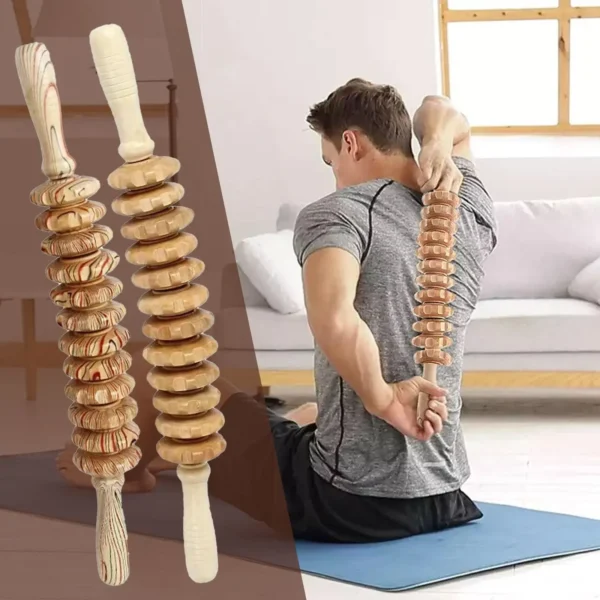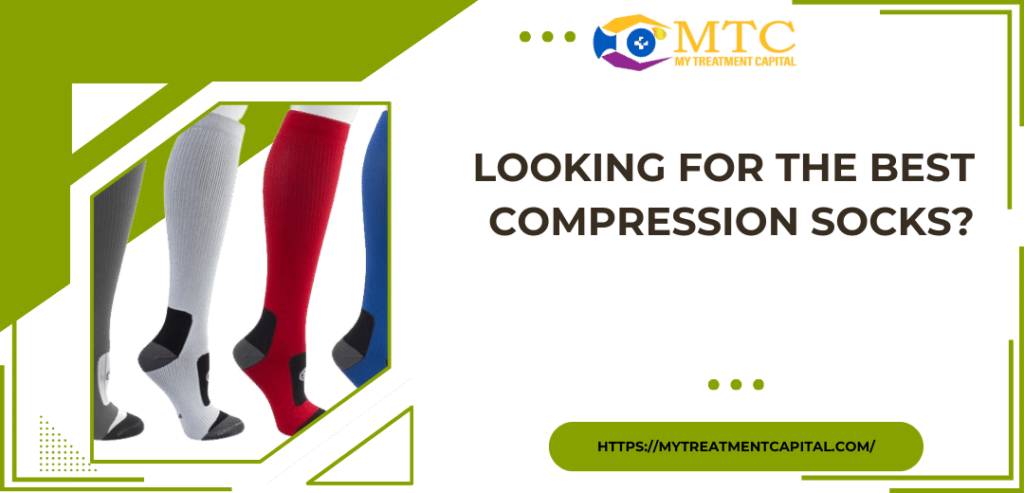Wood therapy, often called maderotherapy or maderoterapia, is a massage technique that uses portable wooden tools. This centuries-old method is thought to have originated in Asia and has gained popularity, notably in South America, where it is known as maderoterapia, derived from the Spanish term “madera,” which means wood.
The Benefits of Wood Therapy
Wood treatment practitioners claim that it provides numerous benefits, including fat reduction, increased lymphatic circulation, stress relief, and relaxation. However, it should be noted that all of these claims have not been scientifically approved or substantiated by the study. Information regarding wood therapy is mostly available from spas and clinics that offer the treatment, rather than formal institutions.
Breakdown Of Fat and Cellulite
One of the most prominent claims about wood therapy is its ability to break down fat and minimize cellulite. While there is no scientific evidence to support the effects of wood treatment, specialized massage techniques, including the use of wood therapy-like implements, have been utilized to treat cellulite. These treatments usually include ‘kneading’ the skin using vacuum suction or a roller. The stated smoothing effect of these procedures is transitory and most likely caused by moderate irritation in the area.
Promotion Of Lymphatic Circulation
Wood therapy also promises to stimulate the lymphatic system, which transports lymph fluid throughout the body and aids in waste disposal. Manual lymphatic drainage is a sort of massage that promotes the natural flow of lymph fluid. While wood therapy has not been scientifically explored in this context, its benefits may be similar to those of other massage techniques that have been researched. However, more research is needed to determine the efficacy of wood therapy in promoting lymphatic circulation.
Alleviates The Stress and Promotes The Relaxation
Massage therapy, when provided by a licensed expert, has been shown to reduce stress levels. Similarly, practitioners of wood therapy argue that it helps reduce tension and induce relaxation. However, unlike massage therapy performed by trained massage therapists, wood therapy has not been thoroughly researched for safety and efficacy.
Other Methods to Reduce Cellulite
Cellulite is a common problem among adult ladies. While there is no definite cure for cellulite, there are a number of treatments and tactics that can help lessen its appearance. It is important to remember that these procedures may have varying degrees of efficacy, and the outcomes may not be long-lasting.
Medical Treatments for Cellulite
Several medical treatments are available for cellulite reduction, although none have been proven to be completely successful in eradicating cellulite. These treatments include:
- Acoustic wave therapy is a treatment that uses ultrasonic waves to break down fibrous tissue and has been demonstrated to reduce the appearance of cellulite.
- Carboxytherapy: Carbon dioxide gas is introduced just beneath the epidermis, and initial studies suggest it may help lessen the appearance of cellulite.
- Cryolipolysis/Cool Sculpting: This therapy freezes undesirable fat and is useful for removing small pockets of fat, although it does not directly target cellulite.
- Laser treatment: Certain laser treatments, such as Cellulaze, employ light energy to break apart stiff bands beneath the skin, potentially reducing the appearance of cellulite.
- Radiofrequency: This treatment uses thermal radiation to heat a specific area and may have a minor effect on abdominal cellulite, but more research is needed.
- Subcision/Cellfina: A needle is introduced into the skin to break and release the tough bands that create cellulite, resulting in less dimpling skin. Results might endure for two to three years.
- Ultrasound: Ultrasound alone has not been shown to decrease cellulite, high-frequency ultrasound combined with vacuum drainage and massage may have a minor effect on abdominal cellulite.
- Vacuum-assisted precise tissue release: This method uses small blades to cut the stiff bands that produce cellulite, allowing the tissue to fill in dimpled skin. A tiny study found that cellulite appeared less frequently after at least three years.
Home Remedies for Cellulite
In addition to medical treatments, there are various home remedies that individuals may try to reduce the appearance of cellulite. These remedies include:
- Apple cider vinegar: While there is no solid data to support the use of apple cider vinegar for cellulite removal, some people believe it can assist. However, additional research is required to substantiate these assertions.
- Caffeine or coffee creams and washes: Caffeine-containing products may temporarily diminish the appearance of cellulite by drying cells; however, everyday use is required to sustain effects.
- Dry brushing: Dry brushing, which involves sweeping a dry brush across the skin, has not been clinically proven to reduce cellulite.
- Exercise: Regular exercise can help build muscle, smooth and firm the skin, and reduce the appearance of cellulite. While exercising will not fully erase cellulite, it may improve its look.
Other Therapies for Cellulite
Apart from medical treatments and home remedies, there are additional therapies that individuals may consider for cellulite reduction. These include
i. Endermologie
This technique comprises deep tissue massage with a hoover tool that lifts the skin. While the FDA has concluded that it is unlikely to cause harm, its effectiveness remains a point of contention.
ii. Retinol Topicals
Products with 0.3% retinol may thicken the skin and minimize the appearance of cellulite. However, long-term use is required to see possible benefits.
iii. Other Creams and Lotions
Creams and lotions designed to treat cellulite are rarely successful. Medical-grade products may stimulate collagen formation, which might tighten the skin, but their usefulness in cellulite removal is limited.
Before starting any cellulite treatment, consult with your doctor or a dermatologist to ensure its safety and suitability for your specific needs.
Is Wood Therapy Effective?
Wood treatment, a massage practice that uses wooden instruments, lacks rigorous proof to back up its claimed advantages. While there may be anecdotal evidence from practitioners and patients who have received wood therapy, these claims have not been scientifically proven.
Massage therapy has been demonstrated to provide a variety of benefits, including lowering muscle tension, boosting blood circulation, activating the lymphatic system, and encouraging relaxation. It is possible that wood therapy, a sort of massage, will provide similar effects. However, additional research is required to determine the genuine usefulness of wood therapy and its unique benefits on cellulite removal.
What to Expect during a Wood Therapy Session
During a wood therapy session, particular wooden tools are used to apply repeated motions on specific areas of the body, such as the face, torso, arms, and legs. Deep, sustained, direct pressure is used to target “problem areas,” and the tools are thoroughly cleaned between uses.
It is essential to remember that the initial few sessions of wood therapy may be uncomfortable as the practitioner and client work together to determine the optimum level of pressure. Session comfort may improve over time. However, wood therapy may cause bruising in some people, so it is best to contact a healthcare physician before beginning to confirm that it is appropriate for your particular circumstance.
Conclusion
Wood therapy is an ancient massage practice that claims to reduce cellulite, stimulate lymphatic circulation, relieve stress, and promote relaxation. However, there is a dearth of scientific evidence to back up these claims, and information regarding wood therapy is mostly sourced from spas and clinics that offer the treatment.
Frequently Asked Questions
Q. What is wood therapy?
Ans. Wood therapy is a massage technique that uses specially crafted wooden tools to manipulate the body’s soft tissues, aiming to contour, sculpt, and tone the body.
Q. How does wood therapy work?
Ans. The wooden tools are designed to mimic the hands and fingers of a massage therapist, allowing for targeted pressure and manipulation. The therapist uses different wooden implements to perform various massage and sculpting techniques.
Q. What are the benefits of wood therapy?
Ans. Wood therapy is believed to help reduce cellulite, break down fatty deposits, improve blood circulation, and promote lymphatic drainage. It can also tone and sculpt the body, reduce muscle tension, and enhance relaxation.
Q. Is wood therapy painful?
Ans. Wood therapy should not be painful when performed by a skilled and trained therapist. However, individuals may experience some discomfort, especially if they have sensitive areas or tense muscles. It’s essential to communicate with the therapist about your comfort level during the session.
Q. How long does a wood therapy session typically last?
Ans. The duration of a wood therapy session can vary, but it often ranges from 30 minutes to an hour. The length may depend on the specific goals of the session and the areas of the body being treated.
Q. Who can benefit from wood therapy?
Ans. Wood therapy is generally considered safe for most people. It can benefit those looking to improve the appearance of their skin, reduce cellulite, and enhance body contours. However, individuals with certain health conditions or concerns should consult with a healthcare professional before undergoing wood therapy.
Q. Are there any contraindications for wood therapy?
Ans. While wood therapy is generally safe, individuals with certain health conditions such as skin infections, open wounds, or circulatory disorders may not be suitable candidates. Pregnant women and individuals with severe medical conditions should consult their healthcare provider before undergoing wood therapy.
Q. How many sessions are needed to see results?
Ans. The number of sessions needed to see results can vary based on individual goals and body conditions. Some people may notice improvements after a single session, while others may require multiple sessions for more significant and lasting results.
Q. Is there any post-treatment care required?
Ans. After a wood therapy session, it’s advisable to drink plenty of water to help flush out toxins, avoid intense physical activity for a short period, and follow any specific instructions provided by the therapist for optimal results.
Q. Is wood therapy suitable for weight loss?
Ans. Wood therapy is not a weight loss method. While it may help improve the appearance of the skin and body contours, it is not a substitute for proper diet and exercise in achieving weight loss goals.



